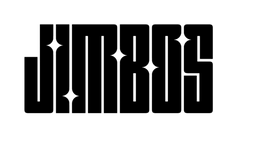DIY Detail Rinseless Wash Review – Is It Worth It?
DIY Detail’s rinseless wash claims to let you clean your car safely with just a bucket of water. But does it actually work as promised? The short answer: yes, it can work in the right conditions—but there are important limitations to know before you use it.
What Is a Rinseless Wash?
A rinseless wash is a wash method where you dilute a solution in a bucket, soak a microfiber towel, and wipe the car section by section without rinsing with a hose. The formula is designed to lift dirt and encapsulate it, reducing the risk of scratching while saving gallons of water.
How Does DIY Detail’s Version Work?
DIY Detail’s rinseless wash follows the standard method: mix the product in a bucket, use a plush towel, and wipe one panel at a time. The goal is convenience and water savings. While it’s slicker than plain soap, it’s not always enough for very dirty cars. On dusty cars it performs well, but on mud or salt-heavy cars it struggles to clean safely.
Pros of DIY Detail Rinseless Wash
- ✔ Saves water—great for apartments or areas with restrictions
- ✔ Quick and convenient for lightly dirty cars
- ✔ Portable—works anywhere with a bucket
- ✔ Can double as a clay lube or quick detailer in a pinch
Cons of DIY Detail Rinseless Wash
- ✘ Struggles on very dirty or salted vehicles
- ✘ Higher risk of scratching if not enough towels are used
- ✘ Requires multiple clean towels for safety
- ✘ Leaves behind less protection compared to ceramic-based sprays
Better Alternatives for Most Drivers
If your car is more than lightly dusty, a rinseless wash may not be the safest choice. Instead, a low-effort soap like Super Soaper can be used in a foam cannon or pump sprayer for a semi-touchless wash. This pre-soaks and loosens grime before you ever touch the paint, making it far safer than rinseless wipes on a dirty car.
For protection after washing, a ceramic spray like Tough As Shell adds months of gloss and hydrophobic performance—something rinseless washes can’t match.
Pro Tips for Using a Rinseless Wash Safely
- ✔ Always use multiple clean microfiber towels—never reuse a dirty side.
- ✔ Work one panel at a time and flip towels frequently.
- ✔ Avoid using rinseless on heavily soiled cars—stick to lightly dusty conditions.
- ✔ Add protection after washing, since rinseless products don’t leave lasting gloss or shielding.
Customer Review
"DIY Detail’s rinseless wash worked fine on my garage-kept car, but when I tried it after a rainy week it smeared dirt. Switched to Super Soaper foam and it was way safer and faster." – Verified Buyer
Safer Alternatives to Rinseless Washing
- Super Soaper – semi-touchless pre-soak for safer washes
- Tough As Shell – spray-on ceramic protection
- Everyday Microfiber Towels – gentle, reusable, and safe for paint
Get pro-level results at home without risking scratches or wasted time.
Related Posts
- One-Step vs Two-Step Paint Correction
- Chemical Guys vs Modern Foam Soaps
- The End of the Two-Bucket Wash Method
Conclusion
DIY Detail’s rinseless wash works, but only in the right conditions. For light dust it’s convenient, but for real-world dirty cars, a modern pre-soak like Super Soaper is the safer, more effective option. Pair it with a ceramic spray for lasting results.



